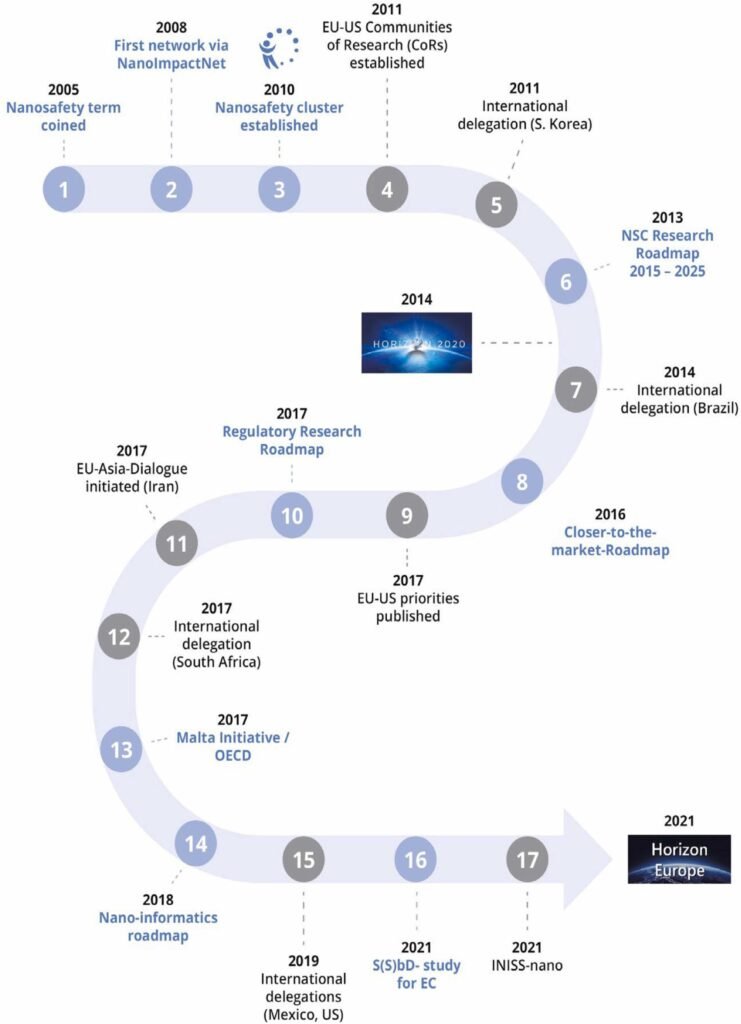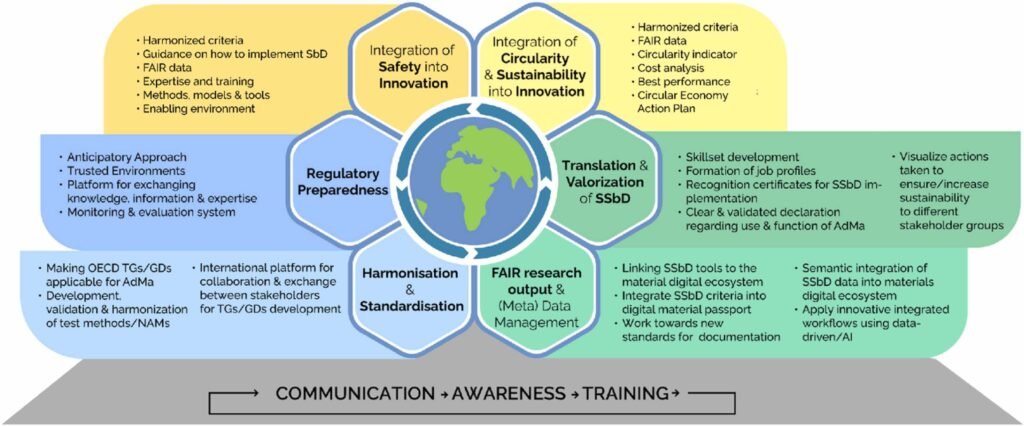The new publication entitled ‘Roadmap towards safe and sustainable advanced and innovative materials. (Outlook for 2024-2030)’ has been co-authored by a team of researchers from the INSIGHT Project Partners AcumenIST, Seven Past Nine, NovaMechanics, and University of Birmingham.
The publication builds on the experience of the nano(materials)safety community, which has a long record of accomplishments in fully incorporating and embracing the safety assessment of nanomaterials at an early stage in the material design and innovation process. The community was instrumental in introducing and implementing the concept of regulatory relevant method development for characterisation and toxicity testing through its multidisciplinary publicly funded projects, setting milestones with several projects since then.
Through these projects, leading researchers in both the public and the private sector collaboratively contributed to the standardisation and harmonisation needs identified by official, international bodies, such as the OECD Working Party on Manufactured Nanomaterials (OECD WPMN) (established in 2006) and the ISO/TC 229 Nanotechnologies and CEN/TC 352 Nanotechnologies committees (both established in 2005). In doing so, the wider (nano)materials safety community developed and adopted a principle of shared responsibility, based on a recognition that the most knowledge and innovation knowhow in nanomaterials’ innovation capacity was held by industries that invested in R&I strategies, while the academic and regulatory communities held unique expertise in identifying and removing limitations of existing test methods and the development of new ones.

Over nearly 20 years, the nanomaterials safety community established strong interdisciplinary, precompetitive collaborations under the above-mentioned principle of shared responsibility, and thereby secured both an ongoing advancement of nanomaterials innovation, whilst simultaneously improving the safety and environmental impact of the resulting products and processes.
As a consequence of the drastically increased demand of new (nano)materials resulting from EU policies as well as changes in geopolitical relationships, the Safe-by-Design (SbD) concept, initially developed by the biotechnology community, and subsequently elaborated, improved, and deployed by the nanomaterials safety community, represents a milestone of the communities’ practised principle of shared responsibility. Its adoption and widening to a concept of Safe and Sustainable by Design (SSbD) by the European Commission acknowledges the unprecedented nature and achievements of the nanomaterial’s safety community.
This ground-breaking collaborative process uniquely enabled the nanomaterials safety community to bring its expertise and complement the approaches to the wider chemicals and materials community, thereby widening the principle of shared responsibility to the safe and sustainable design of all stages along the value chains of materials in all their market sectors.

The Road ahead
In today’s fast-paced world, the possibility to work with innovators from the design phase is more crucial than ever. This approach not only fosters creativity and out-of-the-box thinking. It also ensures that products are developed with the latest technologies and user-centric design principles. However, this kind of collaboration demands regulatory preparedness and foresight. It is vital to anticipate and address potential regulatory challenges early on in the design process to avoid costly delays and setbacks down the line. By staying ahead of the curve, companies can navigate complex regulatory landscapes with greater ease and confidence. Moreover, this proactive approach opens up a possibility for promoting the development of innovative advanced materials that are safe and sustainable. By integrating environmental considerations and safety standards from the outset, designers and innovators can pave the way for the creation of cutting-edge, eco-friendly materials that meet the needs of today without compromising the future.
Ultimately, it is clear that the potential for promoting the development of innovative advanced materials that are safe and sustainable exists if we follow the good advice in this roadmap. By embracing collaboration, regulatory foresight, and a commitment to sustainability, businesses can drive positive change and contribute to a more innovative and responsible future.
Download the full Roadmap paper here.









